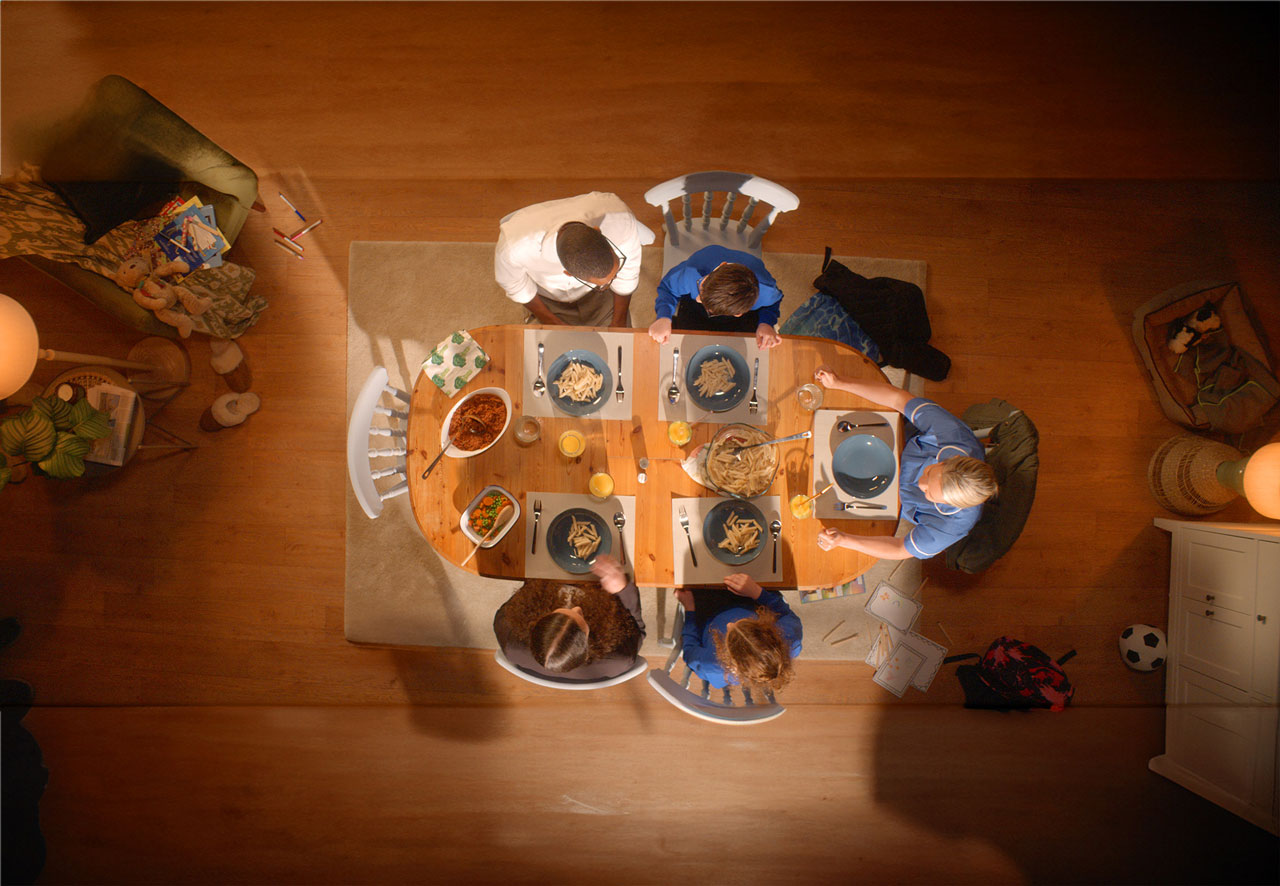
When most people think about fostering, they imagine lots of children coming and going. Often stories about foster carers in the local papers feature a headline saying how MANY children they’ve fostered for over the years.
But when we speak to people about fostering, the idea of growing “too attached” and “letting children go” is often enough to put them off the idea.
In a survey by Foster Wales in June 2024, 24% of people surveyed said this was the second highest reason preventing them from enquiring about fostering. Second only to the practicalities of not having a spare room and space in their home.
But there is another way to foster.
Fostering without the goodbyes.
Rather than fostering lots of children for a short time , you could give family to 1, 2 or maybe 4 children. This is equally valued and needed.
It’s about giving a child your commitment, promising you’ll be there for them long term, through the tough times, being on their side and in their corner until adulthood or even longer. Considering them part of your family, so that they can come home from Uni for Christmas.
Be family to them, even if the legalities are different to adoption.
what is long term fostering?
Long term fostering, also known as permanence foster care, means caring for a child for a number of years. This usually happens when a child or young person in care is unable to return to their birth family and adoption is not possible or is not what’s right for the child.
Long term foster care means a child or young person is raised by one foster family. They are given consistency and a sense of belonging within a family with a stable home address and school education.
This usually happens after the child has already been in short term foster care.
Our ultimate goal is for families to be reunited. However, in cases where this has not been possible for any reason, a more long-term solution will be considered.
do I get to meet the child first?
Sometimes the current foster carer will become their long-term carer.
Or if their current foster carers are unable to provide the child with the long term stability or support they need, they will move to a carer who can be there for them until they are grown up.
And a gradual introduction to their long term foster carer can be planned.
So if you’ve expressed an interest in long term fostering, you’ll be approached if we think you are a good long term match for a child. You’ll receive lots of information about them from their current foster carers and get to meet the children first.
We’ve even seen cases where the short term foster carer (perhaps in their 70’s themselves) remain in the children’s lives as a grandparent figure.
how long does long term foster care last?
If you decide to foster a child long-term, it is likely they will stay with you until adulthood, or longer.
If the child is young, they could be with you for many years as they grow up. Or , for a young person who’s already a teenager, it’s giving them stability until they are ready to live independently.
Long term fostering doesn’t necessarily mean that you say goodbye at 18. Many foster carers continue to be that young person’s “go-to” person long after they move out.
do children in long term foster care ever return to family?
There is always a chance that birth family’s circumstances can change significantly, and the child may wish to try living with their parent again in their teens.
6 tips from other long term foster carers
We spoke to some of our foster carers who have chosen to foster long term and they shared their experience and advice.
involve your extended family and friends
With long term foster care, there’s more to be considered, not just for your immediate family but for extended family and friends, as you are asking them to be part of the journey. The support of family and friends is invaluable, that’s why its important that they are on board with your decision. They need to accept the child as part of the family, just as much as you do.
be invested for the long haul
Making the commitment of long term, means that you are invested for the long haul, not just to 18 and the child needs to know that, for their sense of belonging and security.
Challenges will always be part and parcel of the relationship, they are testing how committed you and the family really are. If they sense any weakness it can be irreparable, however if they feel safe and loved by your responses, the rewards are plentiful.
be family to them
It’s important for everyone to know who they belong to.
Sometimes, when children feel part of the family in long term fostering, they choose to take on the surname of their foster carer – but this has to be the child’s choice.
reach out to your fostering community for support
Long term fostering is like having an additional family member but with help and guidance when you need it. The support from fellow foster carers and social workers is still regularly available to you.
treat them the same
You need to treat the young person as part of the family, doing their share of chores, taking their views, needs and wants into consideration when making family decisions and treating them equally as a family member. That also means not giving them more than your birth children, treated the same way for pocket money or designer clothes.
teens needs somewhere to call home too
Teens need family too.
Offering a teenager a home for their final years in care gives them somewhere to call home, to spread their wings from, and learn how to be ready for adult life.
Long term doesn’t stop at 18. How many children really leave home at 18 these days?
With, what is known as, When I am Ready (or Staying Put in England), the young person can remain with you until they reach 21, and even then the support doesn’t stop until they reach 25. This gives our young people the opportunity to attend college, uni or find work and be ready for independence, and be more like their peers.
long term fostering vs adoption: what’s the difference?
We outline the main differences between fostering and adoption in our blog ‘5 differences between fostering and adopting’ but here are our top seven at a glance:
- Support From Social Services – When a child is in permanent foster care, there is a community of support around them and their foster family from social services, Foster Wales, and other foster families. However, when a child is adopted, the regular involvement from social services ends, but is still available when needed through adoption support.
- Legal Responsibility – Not only does the involvement of social services determine the regular support provided, but the legal responsibility for the child, too. When a child is in long term foster care, this remains with the local authority, However, following adoption the legal responsibility fully transfers to the adoptive family. When you adopt a child, you become the child’s parent.
- Decision Making – An adoptive parent will make all decisions for a child. However, the parental responsibility and decision-making for a child in long-term foster care is shared between the birth parent and local authority which delegates responsibility to the foster carer.
- Finances – All foster carers are given an allowance to care for the children. Adoptive parents have financial responsibility for raising their child, which can be supported by means-tested adoption allowance. Read more: Foster carer pay (the ultimate guide!)
- Family Ties – For younger children, particularly when a child is a baby or infant, adoption may be the right choice for them long-term as it will offer them a fresh start and often a change of surname. However, older children are likely to have a better sense of who they are, their own identity, with strong family relationships. In this case, long term fostering may be more suitable.
- Contact With Birth Family – These days, most adoptions are ‘open’. This means that the child knows they are adopted, who their birth family is, and they may have occasional contact e.g. birthday or Christmas. While long term foster care provides permanence and stability, children don’t need to say goodbye to their birth parents or other family members. Depending on the individual circumstances, a child in long term care could see their siblings, grandparents or birth parents as regularly as once a week or a few times a month.
- Mindset and Motivation – Whether living with adoptive parents or foster carers, a child will be loved and well-cared for. However, in our experience, there is a difference in mindset and motivations: Adoptive parents may be looking for a child to permanently join their family, take on their name and be a parent perhaps for the first time. Whereas foster carers tend to open their homes to help a range of children, prepare them for their next stage in life or to return home, whilst working alongside the birth family and children’s services.
thinking of becoming a foster carer?
If you would like to learn more about the types of fostering, including long term care, please get in touch with your local authority team.
Alternatively, to find out more about adoption contact the National Adoption Service.

I’ve worked in local authority fostering for over 18 years, meeting some of the most passionate people. Over the years I’ve learned from social workers with decades of experience who know the children, know their stories – and can tell you the children’s dates of birth off the top of their heads. And I’ve learned from real foster carers and been privileged to hear their stories and the stories of inspiring care experienced young people. I love what I do.
